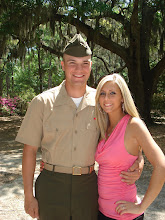In order to be the best teacher I can be I need to be a culturally competent teacher who communicates in ways that take into consideration sociocultural and linguistic differences of my students and their families. I need to use many different techniques, including verbal and non-verbal communication that will encourage positive social interaction between myself, my students, and their families and support learning in the classroom. At Brown Long Elementary school I have seen Mrs. Hope take into consideration her students cultural differences to a certain extent while teaching. Sometimes I feel she over looks students behavior that associates with their socioculture and linguistics.
As I have states a couple times Lee is the one student who comes to mind when I think about communication between a teacher and their students. I feel there is a great lack of communication between Lee and Mrs. Hope. I also have not seen any attempts on her part to break those communication barriers. I also think of another student Alex. Alex is an African American 1st grader who acts like an adult. He does not communicate nicely with the other students nor does he listen to the teacher. He walks around rapping songs that include swears and the word “nigger”. He also tells others students they are “African monkeys”, and if something doesn’t go his way he tells other students that he will “bang them in their face.” When I first heard Alex talk like this I was shocked. I could not believe the things that were coming out of this first graders mouth. I can also recall him putting a student in a choke hold one day in class. I try to explain to Alex that what he says to other students is not nice and hurts their feelings but I don’t think he understands because he just laughs. I would imagine that Mrs. Hope has heard Alex speak like this before, and has seen his action or has heard about them from other students yet I have never seen her sit down and talk to him one on one. When I went into Mrs. Lewis’s class I noticed that most of her communication to the students was yelling. I did not really see any non-verbal communication the day I visited her class. I do not believe that yelling orders at her students all day creates or encourages positive communication between her and her students. I feel that the students sometimes might fear her and not want to communicate with her.
While I was tutoring students at Brown Long Elementary I believe I did communicate with the students on a verbal and not verbal way. I was able to have the students read to be and help them where they needed help. I was also able to help the students improve on their reading skills by making flash cards and playing games like goldfish with them. I also believe I was able to communicate non-verbal with the students when I felt they were misbehaving I used my hands to help get my point across. When the students were being too loud I was push my hands in a downward motion of put my finger up to my lip. I also believe the students could tell from my body language when I was proud of them and felt like they were doing and good job and when I was upset with them for not seeming interested and not listening.
These experiences made me think of The Democratic Conception in Education by John Dewey. John Dewey stated that Education is a social function, and that learning happens by being active participants. This is where I believe Mrs. Hope and Mrs. Lewis failed. I don’t believe Mrs. Hope communicated with some of her students enough to encourage positive social interaction between the students in her classroom. With Mrs. Lewis I feel she was not active with her students. The hour and half I spent in her classroom I observed her giving students orders. I did not see here actively working with her students. How are students suppose to learn when the teacher is not actively working with them to improve their skills? John Dewey also believes in a mobile society. A mobile society is when each individual has a chance to change. In order for students to change certain behaviors and grow as students they need positive encouragement and communicate from their teachers. As future teachers we need to remember that not every student comes from the same culture, and not all students are the same. That is why we as future teachers need to recognize every student and not ignore certain behaviors. We are reasonable for giving our students the best opportunities to succeed in our class.
Subscribe to:
Post Comments (Atom)

Hi Kayla,
ReplyDeleteI think your connection to Dewey was very thoughtful. I have had similar situations in my classroom. My teacher does not encourage participation either. Instead, she encourages quiet and discipline. This is the opposite of what Dewey suggests. The teachers should be encouraging participation by all the students, instead of just having them sit and be quiet. By not encouraging the students to be active learners, we can never really have a “mobile society.” The students will not have a chance to change for the better. When we are teachers in our own classrooms, we will need to be able to encourage change in our students to truly have a mobile society.
Good Luck!
Sara